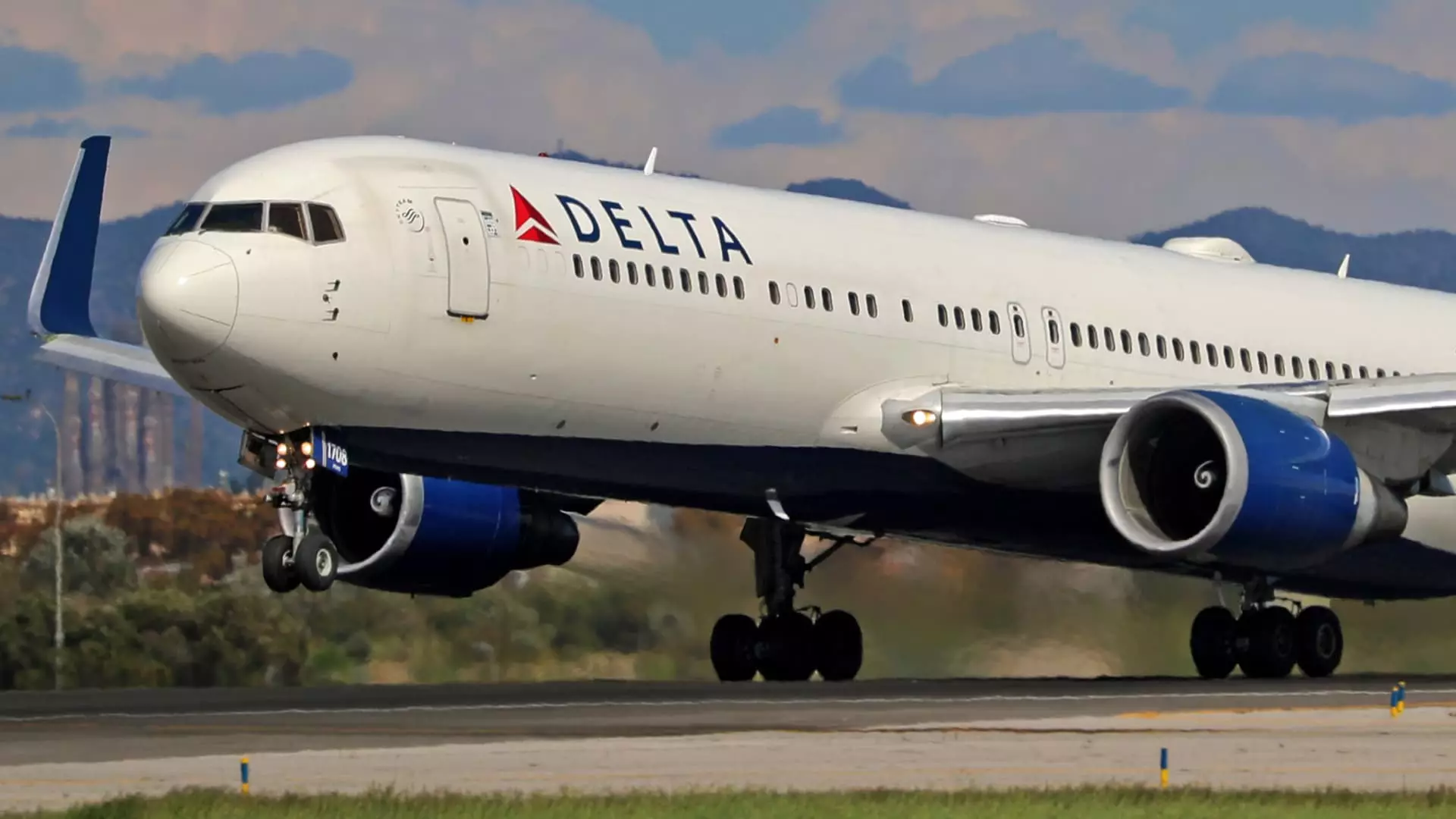The airline industry is bracing for what can only be described as a perfect storm of challenges. With the recent downturn in consumer demand, a stark shift in economic indicators, and unforeseen external pressures, it’s hard not to feel a sense of foreboding about the future of air travel. The ramifications of mass layoffs, harsh tariffs, and reduced travel bookings have culminated in a streak of bad news, and all evidence suggests we are heading into turbulent skies.
The Decline of Demand: A Sign of Things to Come
In a market that had once prioritized travel as a vital aspect of leisure and business, there is now a worrying trend: consumers are starting to pull back from booking flights. This drop in demand is not an isolated incident; it echoes broader economic concerns that are weighing heavily on corporate and leisure travel alike. Recently, analysts have noted that while high-income consumers previously fueled profitability through their willingness to pay for premium services, they are now beginning to exhibit restraint. The once-thriving morale in airline performance indicators is waning, with projections for 2025 likely to be cut significantly. According to Raymond James analyst Savanthi Syth, “things are softer than they were in January,” indicating a concerning shift in travel habits and consumer confidence.
The Impact of Tariffs and Economic Policies
One cannot overlook the significant impact that political decisions have on the airline industry. Under the current administration, newly imposed tariffs of 10% have cast a shadow over what were once bright forecasts. This policy shift isn’t just a minor hiccup; it represents a swing towards a more isolationist economic approach that threatens to disrupt transnational trade and travel alike. The repercussions could be severe, especially as pent-up demand from the post-pandemic era fades into memories of previous travel escapades. The intricacies of tariff imposition create uncertainty, undoing some of the gains made during periods of high demand. Every aviation-dependent business now finds itself walking a tighter economic rope, and it seems that for every step forward, it risks taking two steps back.
The Disappearing Corporate Traveler
While the demand for travel was relatively resilient during years of high inflation, we now see the cracks beginning to show, particularly in corporate travel. The mass layoffs affecting many key players in the corporate sector, such as Deloitte, have rippling effects that extend far and wide. With government travel accounting for a minuscule yet impactful revenue stream, the losses from diminished bookings can prove catastrophic. In times of economic uncertainty, businesses are more likely to cut back on travel expenses, opting instead for virtual meetings. This trend poses a long-term challenge that may create a structural downturn in corporate travel, as companies develop tighter budgets and more remote working arrangements become normalized.
The Stock Market’s Grim Sentiment
Airline stocks have suffered significant declines this year, with United Airlines plummeting over 40% and American Airlines experiencing a staggering drop of more than 45%. This decline isn’t just a statistical anomaly; it reflects a broader market sentiment that considers airline investments high-risk in the current economic climate. With the anticipated earnings report looming, analysts have voiced dissatisfaction, opting to lower their price targets and ratings. The ironic aspect of this market response? The notion that “the level of sell-off is worse than the reality right now” does little to comfort those invested in an industry that has historically demonstrated resilience. Such a drastic recalibration can undermine vital revenue streams and elevate operational anxieties markedly.
Consumer Confidence in Decline
In tandem with the woes facing airlines, a perceptible decline in consumer confidence is becoming apparent. Studies indicate that people are hesitating to book trips and choosing to pare back on their travel arrangements altogether. This is not merely a symptom of the economic climate; it also reflects a cultural shift where consumers are reconsidering the value of travel experiences. While some of this may be attributed to external factors such as inclement weather or timing of holidays, the underlying message is clear: uncertainty leads to hesitancy. With Baby Boomers—who historically contribute significantly to travel spending—likely to tighten their belts, the larger ramifications of this trend can’t be overstated.
Navigating Uncertainty: The Way Forward
Despite facing a climate fraught with challenges, there are whispers of potential strategies within the airline sector to stimulate demand. Airlines may lean into loyalty programs, engaging frequent flyers by offering attractive point redemptions. Encouraging this demographic to fill cabins is a tactical move that could, perhaps temporarily, fend off the harsh realities of a broader market slowdown. However, this strategy doesn’t come without its own set of risks, as it raises questions regarding yield management and revenue diversification.
The road ahead for the airline industry is riddled with uncertainty, making it imperative for decision-makers to reel in creative strategies to navigate these turbulent times. Stakeholders must grapple with the reality that the era of limitless travel might be fading, and in its place could emerge a new norm of cautious consumerism. The pressing need for resilience and adaptation has never been more apparent.

